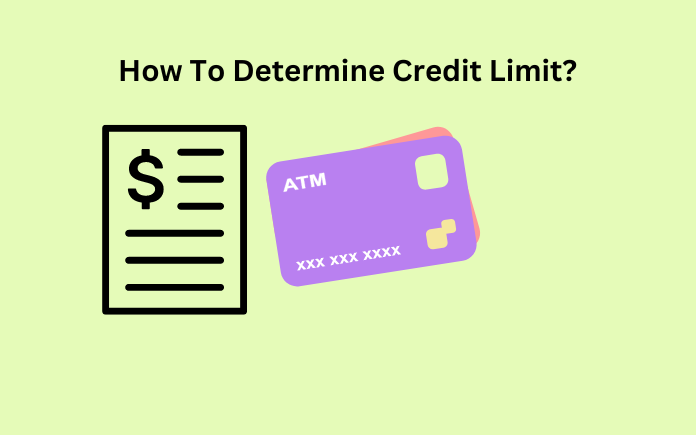How to determine Credit Limit
A complicated procedure known as underwriting, which is based on mathematical formulas, extensive testing, and analysis, is how financial institutions determine your credit limit. The procedure's specifics are kept confidential because that is how the business generates revenue. The main issue is that this method of calculation assists the business in deciding who to approve, at what rate, and within what limits. The greater the credit limit, the more the lender expresses confidence in the borrower's ability to repay the debt.

What is a Credit Limit?
The credit line provided by a credit card
issuer to its cardholders is known as the credit limit. This credit limit,
which is also known as a credit line, is established after an application is
accepted depending on the consumer's credit quality and can rise over time with
wise card use. Customers can also ask for progressive credit line increases to
better suit their needs. The criteria used by various credit card companies to
determine the credit limit that will be given to a particular person can vary.
However, there are a few common factors that banks use to determine the credit
limit. Let's go into more detail about these components.
Revenues and debts
It is very straightforward: the amount of debt
you can afford to pay depends on how much money you make. However, this does
not appear to suggest that having a higher income will increase your credit
limit. Banks take a glance at your debt-to-income ratio in addition to your
income when making this decision.
Credit cards with predetermined
limits
The majority of credit cards come with a
predetermined credit limit. This means that after the issuer assesses your
creditworthiness, they will set a maximum amount of outstanding balances that
you are permitted to have on your account in the form of new buying or
transferred balances. This predetermined limit may be raised over time or at
the request of the customer if your credit scores allow and the credit card
issuer is willing to grant more credit.
Cards that don’t have set credit
limits
Some luxury charge cards and credit cards have
credit limits that are dynamic, meaning they can increase or decrease depending
on your actual spending patterns and needs. These credit limits are not fixed
and can grow or decrease as needed. Although these credit limits are flexible,
if a sizable purchase is anticipated, the dynamic credit line can typically
accept spending that is out of the ordinary.
Conclusion
A process known as underwriting is used by
credit card companies to determine an applicant’s credit limit, which changes
depending on the company, and commonly includes computing factors, such as the
candidate’s credit rating, performance history with credit cards, and level of
income. If cardholders pay on time and stay within their credit limit, their
credit limit may be increased.
Read More: Ways To Increase Credit Limit On HDFC Credit Cards



Comments
Post a Comment